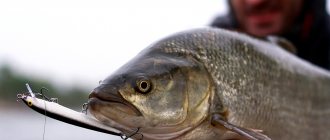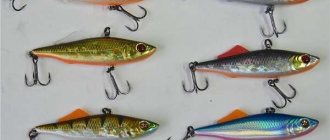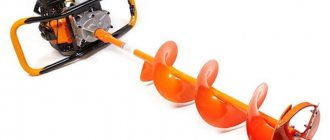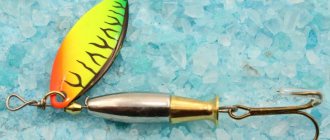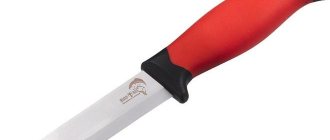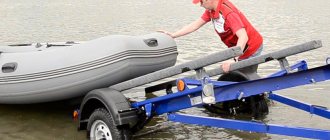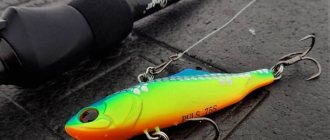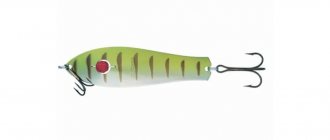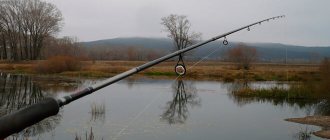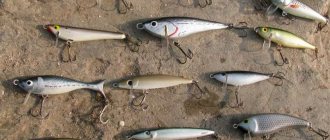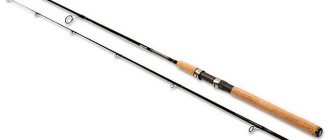Rattlins are already quite well known to many fishermen, although reviews about these baits vary: some praise them and give them honorable first places in the fishing arsenal, while others, on the contrary, complain about their poor effectiveness.
Rattlins are similar in properties to cicadas, so those fishermen who have already dealt with cicadas will not have much difficulty mastering rattlins.
Rattlins work especially well on perch, pike and zander.
Read more about the shape, size, wiring and fishing with rattlins further in the article.
What are rattlins?
We call sinking baits without a blade Rattlins. The eyelet for attaching to the fishing line is located at the top of the rattlin. The immersion depth and subsequent placement of the rattlin are significantly influenced by the size and weight of a particular model. Small rattlins are only suitable for catching shallow-water predators, that is, at a depth of 1-1.5 m.
To fish for a deeper water horizon (3-6 m), you will also need a bait with the appropriate dimensions.
Rattlin: what is it and what do they eat it with...predators
Rattlins are bladeless, flat, sinking wobblers. In appearance, artificial bait resembles a small fish, the narrow body of which is flattened on the sides, and the wide head is slightly beveled. Manufacturers make wobblers from plastic and silicone. Most models are equipped with metal balls, which create a noise effect when wired.
Rattlin's game is high-frequency. You can secure the line using a loop located on the back of the bait. During wiring, the vib begins to create small oscillatory movements in the water, attracting the attention of predatory fish.
From the author. Ratlin is a bait for intellectuals; without having his own game, he reacts only to the actions of the fisherman. Therefore, the ability to correctly select and present a vibe for different fish in different conditions is the basis of success. So, let’s say pike perch prefers quiet Ratling models, and pike prefers noise ones. At shallow depths of up to 2-3 meters, rattlin shows good results in throws with a fairly large amplitude, and at depths of 5+, animations like high-frequency dribbling, as well as smooth stretches followed by a pause and release into free fall, perform well. And so on and so forth - study, understand and apply...
Difference from vibe - what is it?
Vibes are bladeless wobblers of the sinking type. They vibrate during play. Europeans call artificial fish differently:
- vertical wobbler;
- bladeless wobbler;
- Vibom.
Rattlin denotes a specific modification of bladeless wobblers, and vib is the name of a group of artificial baits of a similar design.
Ratlin Lucky John for winter and summer fishing - video review of new products for the 2020-2021 season:
Rattlin sizes
There is no need to worry that deep-sea fish that love small fry will not pay attention to a rather large rattlin.
Medium and large perch, as a rule, take large baits well, especially since such rattlins are clearly visible, and their vibrations and sounds are better heard by the fish. Often even small perches are attacked by rattlins with a body length of 7-9 cm.
More important is the efficiency of the wiring, which will be discussed later.
rattlin' game
The specific shape of the bait is distinguished by a flattened body and the absence of a front blade. Many fishermen have a hard time imagining how a model that is not similar to any of its usual inhabitants works. A special chamber with a rattle and ratchet inside also raises doubts.
For zander
The question of the usefulness of noise is often raised. It is generally accepted that in muddy water it should make noise to attract attention, and in clear water it should be quiet so as not to scare away the fish. But the rule does not always apply unambiguously. Experienced fishermen believe that the direct sounds emanating from the knocking balls mean less than the infrasounds from vibrations that the fish picks up on the lateral line.
A high frequency of oscillations combined with a small amplitude of movements characterizes rattlins. The model was developed for fishing for large perches, but in practice it is suitable for catching toothy pike and pike perch. Unlike the wide wobbles of bladed cranks, small, high-frequency trembling effectively provokes a predator into a rapid bite. A characteristic game is built into each model by the developers.
The bait exhibits small-amplitude action, as a rule, when immersed in the middle water column. But there are special heavy models for reservoirs with active currents that lure passive pike at the bottom of the reservoir. Wobblers for trolling pike.
Rattlins, due to the game in the form of vibration during wiring, are regarded as vibration, which gave rise to the second abbreviated name vib.
Rattlin wiring
Rattlins sink for a long time, and due to the lack of a blade, they do not go deep when retrieving, but on the contrary, they float up. That is, during wiring you have to take long pauses so that the rattlin reaches the desired depth.
Often, when fishing with rattlins, the classic uniform retrieve is enough, but if it still does not bring the desired result, it is worth trying other options. For example, baits of this type work well when using stepped wiring, thanks to which you can determine the bottom topography and find promising places.
Another effective way of wiring a rattlin is uniform wiring with elements of twitching, that is, with periodic light twitching of the rod. This behavior of the bait angers predators and subsequently provokes an attack.
Don’t be afraid to experiment with wiring, as perch can sometimes be quite capricious, and the sight and noise of the bait alone is not enough.
Catching pike in winter with ratlins
Winter pike do not like the sudden movements of ratlins and this should be taken into account first of all when fishing for them. That is why you will need to lower the rattlin to the surface of the bottom of the reservoir and gradually raise the bait by 40 cm. After this, a smooth pull up another 30 cm is done and a controlled descent down.
It is important that the movements are smooth. An artificial fish should imitate an easy prey that has become exhausted.
Pike rarely respond to sharp and chaotic jerks of ratlings - this should be taken into account when choosing a pike vibe and when animating it in the future
How to choose a pike winter vibe
When choosing bait, it is worth considering the conditions in which the predator will be fishing. When fishing in shallow waters, it is worth purchasing slow-sinking models that are characterized by smooth play. If you plan to fish in a deep-water section of a reservoir, it is recommended to give preference to quickly sinking wobblers whose weight is 15-20 grams.
Note! The shape of the ratlin does not matter for pike fishing. What is more important is how exactly the rattler will be animated. To catch pike we remember - slowly, sweepingly, with pauses.
The most catchy rattlins for winter pike fishing: TOP 5 models with photos
The huge range that the fishing market offers is confusing. To choose the most catchy model, you should familiarize yourself with the top 5 vibrations in advance; our subjective rating of the best ratlins for winter pike fishing includes:
- Rapala Rattlin – classic, 6 centimeter and 7 centimeter model is ideal for fishing at depth. When the fish descends, it makes micro-oscillations that provoke the pike to attack.
- Saurus (ROSY DAWN) – a fairly weighty (model range: 55 mm-12 g, 65 mm-18 g, 75 mm-25 g) vibrator with a dorsal fin-rudder. The Ratling's well-balanced body is equipped with reflective eyes. This ratlin is suitable for both pike fishing and trophy pike perch.
- Shimano Exsence Salvage 85ES – a heavy, massive bait that works great in deep-water areas of the reservoir during the cold season. Works on trophy pike and zander.
- Daiwa TD Salt Vibration – a large-sized rattlin (length is 9 cm and weight up to 28 grams), can be used for hunting pike in deep water. Originally for salt water. Therefore, in fresh water bodies with high density, it has almost neutral buoyancy and sinks slowly, so you can use it to slowly and lazily drag trophy bottom pike.
- DUO BAY RUF SV 70 and 80 – Ratlin, which has good catchability and minimal risk of snags on snags.
By purchasing any of the ratlers listed above, you can be sure that the fishing trip will be successful if there are, in principle, fish in the reservoir, and animation methods have been mastered and applied in practice.
The details about catching pike with ratlins are very detailed and accessible.
How to catch perch with rattlins
The perch reacts to the rattlin quite quickly, so to check a specific area of the reservoir for the presence of a predator there, you will need about 4-5 casts.
If the bites start, then you can successfully fish in one place for quite a long time. If there is no bite, you should look for fish in another place, preferably around an underwater hill and using long casts.
Perches can feed at different times, so if possible, it is worth trying to fish a “dead” area again after some time.
Features of seasonal fishing
Most rattlins are designed for casting with a spinning rod in the summer. When fishing vertically, they move in a vertical plane without making pronounced movements to the sides, so it is more difficult to provoke a predator to bite with them. Such a game can scare away the pike. Therefore, for winter pike hunting, you should choose rattlins, which are declared by the manufacturer for ice fishing.
Rattlin fishing in summer
In the summer, pike do not gather in groups, but are distributed among different corners of the reservoir. Using a rattlin, accurately making long casts, you can explore large areas of water while staying in one place.
The best option for summer fishing from the shore and from a boat are baits with a length of 70 mm, whose minimum weight is 15 g. They will allow you to explore all layers of depth. They start fishing a new place from the bottom layer at the bottom, then raise the bait higher, increasing or decreasing the speed of winding the line onto the reel. For these purposes, there is a counting system - that is, having determined the count of the bait’s descent to the bottom, the next retrieve is carried out 3-5 counts earlier.
About
Catching perch with rattlins in autumn
The best time for perch to be caught on rattlins is on clear days with good weather.
We also note that these baits cope well with algae, that is, you can try fishing in slightly overgrown areas of the reservoir.
Wiring
The versatility of the bait is manifested in good play on different horizons, which the angler determines independently. To attract fish, vibrations are equally effective both in the middle water column and in the bottom layer. They are successfully carried out in shallow water of 1.5 - 2 meters, and are used for catching whirlpools. Success is due to the demonstration of the fisherman's skills in the fishing technique.
Uniform
The method is considered to be the most accessible. After casting, you should wait until the rattlin reaches the required depth, then begin a uniform movement. The wiring must be interspersed with occasional stops, slight accelerations, and a decrease in speed. Rattlin plays actively, vibrates his body. It’s good to interrupt the rhythm by twitching the fishing rod, which lures the predator to bite.
Jig
Jigging techniques are optimal using sinking baits. After casting, the rattlin slowly sinks. Without waiting for the final dive, a “step” is performed by quickly reeling in the reel or tossing the rod. When the bait touches the bottom, the step is repeated. Jig wiring is performed in areas where snags and underwater vegetation are unlikely to be found. The two treble hooks that the rattlin is equipped with are not snag-proof.
wavy
Achieving wave-like wiring is achieved by accelerating and gradually slowing down the speed of the reel or by raising and lowering the fishing rod. The bait will move unevenly, thereby attracting a predator. Wave-shaped wiring is most suitable for pike hunting.
Sheer lure
This method is used to fish deep areas. When lifting, vibration oscillations occur; at the moment of a pause, a movement to the side occurs, then a return to the original axis. To play such a game, you need rattlins of an elongated shape, with a flattened tail instead of a wing. Sheer lures are used in winter for ice fishing.
Ice fishing
Stop & Go
The wiring is successful for fishing water areas. You can get fine-frequency vibrations by 3-4 turns of the coil followed by a hitch. The movement pattern is similar to saw teeth. During the pause, rapid immersion occurs. The sound of a rattle increases the fish's interest in the object.
Fishing gear with rattlin
An important condition when equipping fishing rods is that the weight range, or gear test, matches the weight of the bait used. For jigging, a spinning rod of the appropriate direction is selected; for uniform fishing, any fishing rod is suitable.
Fishing with very heavy baits is carried out with jerk tackle. Some rattlin models weigh 100 g. In water they produce powerful low-frequency vibrations, which are especially attractive to trophy pike.
An American fishing rod with guide rings and a hard carbon fiber whip is considered a suitable fishing tackle. The length of the form is about 70 cm.
Fishing in reservoirs up to 6 m deep allows a reel for winding fishing line. On deep rivers it is better to install a multiplier reel.
It is better to use a metal leash or one made of large diameter fluorocarbon in the equipment. This factor reduces the risk of tees overlapping with the main line. Durable material keeps the leash intact for a long time.
Winter fishing rod for rattlin
Top 10. YUZI
Rating (2021): 3.88
5 reviews from resources taken into account: AliExpress
- Characteristics
- Price per piece: 119 rub.
- Weight (g): 26
- Size (mm): 95
- Dive: bottom
- Number of sound chambers: 1
- Color options: 6
Any solid bait that has an acoustic effect can be called a rattlin. In this case, the number of sound chambers and their design are unimportant. For example, in this case, only one module is used, located in the head of the fish. A fairly large groove has two balls at once, creating different sounds depending on the type of wiring and the strength of the current. Of course, you won’t be able to control the sound, so the effectiveness of the gear will be random. It is perfect for places with large concentrations of fish, and you can fish both under ice and in clear water. The manufacturer offers 6 color options for any time of year.
Advantages and disadvantages
- Dual sound module
- All-season colors
- Random performance
- Difficult to control in medium water
Buy on AliExpress.com
Rattlin device
What does it consist of?
- The body can have either the standard diamond-shaped shape for these baits, or a slightly elongated and even protruding shape. The body most fully imitates a small fish - it has a corrugated scaly surface, gill covers and eyes are well drawn on it, which are often made of a rather naturalistic red translucent plastic and are glued into the head; ventral fins. Also on the back there is a dorsal fin of various shapes and sizes, which, in addition to giving the bait a resemblance to a fry, influences the behavior of the wobbler when playing. The body of many wobblers is hollow and contains special balls that create noise during play that attracts predators from a great distance;
- A loop (suspension) with a winding hook is located on the back of the wobbler closer to its head and serves to attach the bait to the fishing line using a clasp or a knot connection;
- Hooks – are fixed in the tail part and on the belly of the wobbler. The most commonly used are treble and double hooks;
The principle of operation of such a bait is similar to a balance beam - it is lowered into the hole and animated with smooth wrist tosses, during which the rattlin can make various movements in the water.
Variations
All bladeless wobblers differ in size, color, body shape, immersion speed, nature of the game, and the presence of noise balls
All rattlins come in sizes:
- 4-6 cm long - small baits used for catching perch and small pike at depths of up to 4-5 meters;
- longer than 7 cm – used when fishing for pike and pike perch at depths of more than 5 meters;
By color:
- natural colors - white, yellow, blue
- bright colors - red, orange;
- “parrot” color – the bait combines several bright colors: blue, yellow, red, white, green
- “clown” color (“red head”) – a bait with a white body has a head painted red
- acidic colors - bright red, light green;
- dark colors - dark blue, black, burgundy, etc.
According to body shape:
- classic diamond-shaped wobblers with a wide body near the head and a narrow tail
- narrow purlin rattlins have a curved body with a small and constant width throughout.
Rattlins of elongated shape
According to the speed of immersion:
- quickly sinking – the weight of such baits ranges from 8-9 to 15-20 grams;
- slowly sinking - have a mass of no more than 7 grams.
Rattlins with neutral buoyancy used for summer fishing and those that float in winter are not used, since due to the limited space of the hole it is impossible to “drive” them to the required depth.
By the nature of the game:
- with a balancing game - when throwing, they make jerking movements away from the central axis of the hole, after which, when falling, they turn around and return to the original point;
- lures with vertical play - when throwing up and falling, they do not or slightly deviate from the central axis of the hole.
Based on the presence of noise balls inside the body of the bait:
- noisy baits, inside the body of which there are special metal balls;
- silent - there are no balls inside the body of rattlins and when playing they do not make significant noise.
